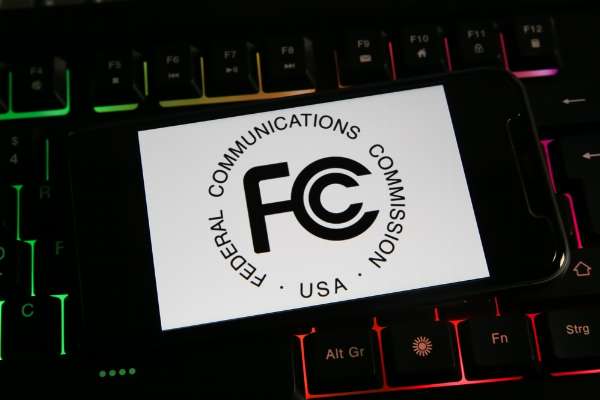On Nov. 14, 2022, the Federal Communications Commission (FCC) officially adopted the long-awaited use of broadband consumer labels. These labels look like nutrition labels on food at the grocery store, but they don’t track carbohydrates or sugar; they help consumers compare broadband plans.
At the point of sale, internet service providers (ISPs) will be required to provide clear data on pricing, introductory rates, performance metrics, and other crucial information associated with any given plan. This comes on the heels of a long battle to gain more consumer transparency in the broadband marketplace.
Here’s what you need to know about how these labels may help you gain a competitive edge when you pick your next internet plan.
How Long Have Broadband Consumer Labels Been in the Works?
In April 2016, the FCC initially released imagery of what a broadband consumer label would look like. Part of the reason why there was a push to create an easy-to-understand comparison tool for broadband plans was because much of the key information about a plan requires calling an ISP directly to learn more.
This isn’t only cumbersome (Who hasn’t waited on hold for over 20 minutes to ask about lagging speeds?), but also unfair to consumers who pay monthly for a service, have options in the market, and should know what they’re paying for. It’s taken six years to work out the kinks among comments from the public, consumer advocates, and reigning ISPs. Many ideas have been floated on best practices to deliver broadband information to consumers. It appears that we’re finally at the end of the line.
What Will These Broadband Consumer Labels Clarify?
Most broadband consumers simply don’t know what they’re missing in one plan that they could find in another. Here are some of the key data points that broadband consumer labels will clearly convey.
Contract Lengths
It’s never fun to buy an internet plan, experience a massive problem with it, and realize that you’re locked into a contract that you weren’t aware of initially. Broadband consumer labels will include applicable contract lengths for consumers to review before purchase. That way, you know how long you’re committed to a provider.
Early-Termination Fees
Even if you enter into a contract with an ISP, it’s not uncommon to find yourself in a situation where you need to break that contract. ISPs have to clearly note on broadband labels if there are any early-termination fees associated with breaking a contract.
Additional Data Costs
Providers have to note what additional costs may compound if a consumer exceeds their data limit. For example, the consumer label will note how much each additional GB of data will cost beyond their plan’s limits. Consequences for breaching a data cap will be clearly noted on consumer labels.
Latency
Consumer labels will also clearly state typical latency metrics for plans. That includes facts like upload and download speeds. These metrics are most important to people who work from home and have to be on video calls frequently.
Are There Any Exceptions to Be Aware Of?

Even with a huge push toward transparency for consumers, there are still some aspects of consumer labels that can be misleading at first glance. Here are a few.
Service Plan Names
Most ISPs offer a suite of internet plans at varying price points and speeds. While some ISPs can choose to present their products with names based on speeds, they’re not required to do so. For example, an ISP can name its plans “Dynamite,” “Decent,” and “Stellar,” and it’s up to the consumer to cross-reference their speeds against one another. The title of the service plan will not always be the speed, though sometimes it will.
Taxes and Fees
Though this was a contested idea, the FCC veered away from requiring ISPs to advertise prices that included upfront costs, taxes, and fees on consumer labels. Different states have varying tax rates, so an all-in price is challenging for ISPs to uniformly calculate. Plus, depending on where you live or what equipment you already own, your installation fees may differ from your neighbor’s.
Affordable Connectivity Program
The Affordable Connectivity Program (ACP) is a federal program that distributes subsidies to low-come Americans to afford broadband services. The consumer labels will clearly state whether an ISP participates in the program, but ISPs can opt out of it. Depending on where you live, this subsidy may not be available for you even if you qualify for it simply because of your ISP’s preference.
When Will You See a Consumer Label?
Consumers may not actually see broadband labels for at least six months to a year, depending on their ISP. There are a few reasons for this.
For one, the Office of Management and Budget has to review the FCC’s consumer label policy one final time to make sure that it aligns with the Paperwork Reduction Act, among other statutes and laws. Once it’s given the green light, major ISPs have approximately six months to design and display their consumer labels. ISPs with fewer than 100,000 subscribers will be given one year.
However, there’s nothing stopping ISPs from getting ahead of the game and generating their consumer labels now. The next time you’re getting ready to buy your dream internet package, your checkout page may include something that looks like a nutritional facts label. If you’re in the market for your next internet plan now, double-check and see if some of the leading ISPs in the market have already unveiled their consumer labels.


